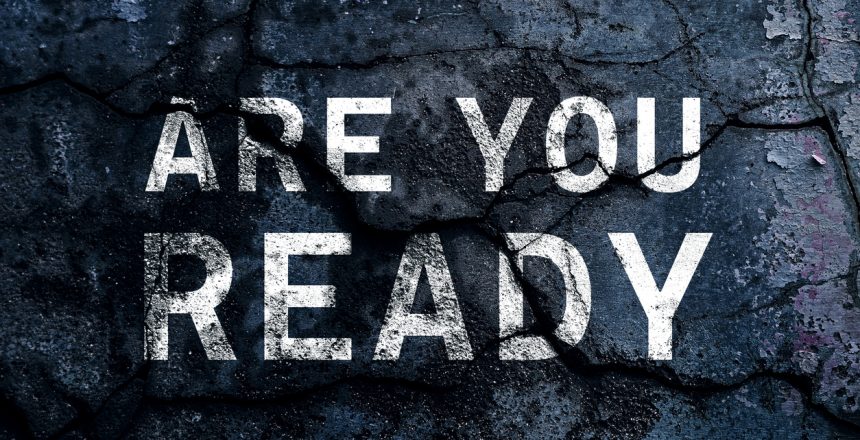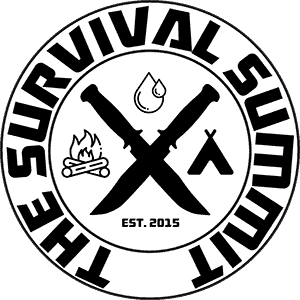How COVID Lockdowns Killed Common Sense

How COVID Lockdowns Killed Common Sense and P.AC.E. Planning
The COVID-19 “pandemic” reshaped the way people think about preparedness. The initial panic-buying of toilet paper, canned goods, and hand sanitizer proved that many Americans were woefully unprepared for even a short-term disruption. As the days stretched into weeks, lockdowns forced people to shelter in place in most areas, and home preparedness took center stage.
But while COVID taught many people the importance of stocking up on essentials, it also created a dangerous mindset: the belief that staying home is always the best and safest option. This complacency has eroded the core principles of preparedness, particularly P.A.C.E. (Primary, Alternate, Contingency, Emergency) planning. In reality, emergencies don’t follow convenient rules, and assuming you can always hunker down at home is a mistake that could cost lives.
COVID’s Impact on Preparedness Mindset
Before COVID-19, many people gave little thought to long-term preparedness. When the pandemic hit, fear and uncertainty drove an initial wave of panic. Grocery store shelves emptied, supply chains faltered, and people realized just how fragile our modern systems are. The pandemic provided a real-world lesson on the importance of being ready for the unexpected.
On the positive side, more people started buying in bulk, stocking up on food, water, medical supplies, and even personal protection equipment. Home gardening, food preservation, and other self-reliance skills saw a resurgence. The idea of “prepping” became more mainstream, and emergency preparedness kits were flying off the shelves.
However, the pandemic also conditioned people to believe that home was the safest place to be in any crisis. Because COVID-19 was a unique emergency where staying home was the best option, many have mistakenly applied this lesson to all potential disasters. This mindset shift is problematic because not all emergencies allow for the luxury of hunkering down.
The Danger of the “Stay Home No Matter What” Mentality
One of the most dangerous side effects of the COVID-era preparedness mindset is the belief that home is always a viable safe haven. While sheltering in place was the correct strategy for a contagious virus, it’s not a universal solution for all crises.
Natural disasters, civil unrest, power grid failures, wildfires, chemical spills, and other emergencies may require rapid evacuation. Yet, many people who became “prepared” during COVID have never developed a bug-out plan. They assume that they are ready for anything because they have a well-stocked pantry and a few backup supplies. This could not be further from the truth.
Why P.A.C.E. Planning Is Essential
P.A.C.E. planning is a fundamental principle of preparedness that ensures redundancy and adaptability. It stands for:
- Primary Plan – Your go-to emergency strategy (e.g., sheltering at home).
- Alternate Plan – A backup if the primary plan fails (e.g., evacuating to a friend or relative’s house).
- Contingency Plan – A secondary backup plan in case the primary and alternate options become unavailable (e.g., bugging out to a hotel or temporary shelter, or another friend or relative’s further away).
- Emergency Plan – A last-ditch effort to survive (e.g., relocating to a different area with limited resources).
COVID lockdowns made people believe that having a stocked home was enough, but an accurate preparedness plan must account for scenarios where home is no longer safe. A well-rounded preparedness plan should include:
- Multiple Evacuation Routes – Roads can become impassable due to floods, wildfires, or civil unrest. Do you have alternate routes planned?
- Pre-Determined Bug-Out Locations – If home is compromised, do you have a secure location to relocate to? Have you coordinated with family or friends?
- Go-Bags Ready to Deploy – Do you have a bug-out bag stocked with food, water, medical supplies, self-defense tools, and other essentials? Think: Shelter, Fire, Water, Food, Medical, Signaling, Land Navigation, Communications, etc.
- Transportation Plans – If fuel shortages arise, do you have a secondary means of transportation such as bicycles, motorcycles, or even on-foot escape plans?
- Communication Redundancy – Do you have multiple communication methods if cell towers fail? (Radios, satellite phones, signal protocols with trusted contacts?)
Real-World Scenarios Where Staying Home is NOT an Option
While COVID made home-based preparedness the norm, there are many crises where evacuation is the only safe choice. Here are some real-world scenarios where a rigid “stay-home” mentality could prove fatal:
- Wildfires
Wildfires can spread at terrifying speeds. Every year, entire towns are consumed because people fail to evacuate in time. No amount of home preparedness will save you if you wait too long to leave a wildfire zone.
- Hurricanes and Flooding
Major storms can bring storm surges and floodwaters that make homes uninhabitable. Once floodwaters rise, roads become impassable, and the evacuation window disappears. The people who assume they can “ride it out” often become the ones needing emergency rescue.
- Chemical Spills and Industrial Accidents
A train derailment, factory explosion, or chemical spill can contaminate air and water supplies. If authorities order an evacuation due to hazardous materials, staying home could result in poisoning or long-term health issues.
- Civil Unrest and Societal Breakdown
While COVID lockdowns created a “just stay home” mentality, the reality is that civil unrest and crime can escalate rapidly. If your neighborhood becomes unsafe due to riots, looting, or violence, staying home may no longer be an option.
- Grid Failure in Extreme Conditions
A long-term power outage in the middle of winter or summer can be deadly. If heating or cooling systems fail, temperatures can reach life-threatening extremes. In such cases, relocation might be the only way to survive. Long-term grid-down events can also cause societal chaos on a massive scale, and if you’re not in a safer, more rural area, your area could become dangerous.
Breaking the COVID-Era Complacency
The biggest challenge now is shifting people away from the false sense of security created by COVID lockdowns. Preparedness is not about a single plan; it’s about adaptability. Stocking up on supplies is just one piece of the puzzle. A well-rounded preparedness strategy requires:
- Training – Knowing how to use gear, navigate low-tech environments, and handle emergencies.
- Mobility – Being able to relocate quickly if the situation demands it.
- Situational Awareness – Recognizing threats before they become unavoidable disasters.
- Community Networks – Coordinating with others for support, intelligence, and mutual assistance.
Relearn True Preparedness
COVID-19 awakened many people to the importance of preparedness but also created a dangerous false sense of security. Staying home worked for a pandemic but won’t work for every crisis. Actual preparedness is about flexibility, redundancy, and the ability to act decisively when circumstances demand it.
P.A.C.E. planning is the antidote to COVID-era complacency. By building a layered approach to preparedness that includes home readiness and evacuation strategies, you ensure that you have a viable path to survival no matter what happens. Now is the time to break free from the “lockdown mindset” and embrace real-world preparedness. Your life may depend on it.
Looking for more information on P.A.C.E. Planning? We’ve just released a new Book: P.A.C.E. Planning: Your Guide to Emergency Preparedness and Bugout Strategies.
